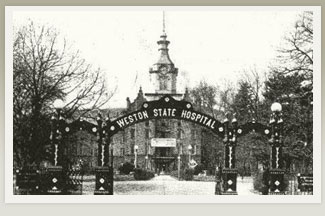West Virginia
Number of Victims

In total, 98 individuals were sterilized in West Virginia under its compulsory sterilization law. Approximately 23% of those sterilized were deemed “mentally ill,” 52% “mentally deficient,” and an additional 23% were classified as neither. Of these sterilizations, 15 were preformed on male patients of mental institutions and 83 were preformed on female patients (Paul, p. 538).
Period during which sterilization occurred
Under state law, compulsory sterilizations in West Virginia occurred between 1929 and 1956 (Paul, p. 535).
Temporal pattern of
sterilization and rate of sterilization
In comparison to its neighboring state of Virginia, sterilization was limited in West Virginia. Sterilizations rarely occurred after the passage of the law until a “revival” occurred in the mid 1950’s when one-third of the total sterilizations were performed (Paul, pp. 535-8). In 1955, when 33 residents were sterilized, the rate of sterilization per 100,000 residents almost reached 3.
Passage of law(s)
On March 5, 1929, a human sterilization act was signed into law (Landman, p. 91). This law was passed soon after the Supreme Court decision of Buck v. Bell in favor of compulsory sterilization in Virginia (Paul, p. 535).
Groups identified in the law
Under the West Virginia sterilization act, patients of state institutions “afflicted with any hereditary form of insanity that is recurrent, idiocy, imbecility, feeble-mindedness or epilepsy, who are candidates for parole or dismissal” may be sterilized (Landman, p. 91).
Process of the law
In order for a sterilization to take place under the West Virginia sterilization law, the superintendent of a state institution had to identify an individual who fell into the identified group listed above as threat to his or her own health or to the welfare of the state. The superintendent would then recommend then patient to the public health council. Thirty days after receiving such a recommendation, the council would conduct a hearing to examine the merits of the recommendation. Throughout the process a guardian was appointed to the patient in question in order to defend the rights of patient. Within the thirty days after the council rendered a decision, appeals could be made, and following this time period the sterilization procedure could be preformed (Landman, p. 92).
Precipitating factors and processes
Given that the West Virginia sterilization law drew its legitimacy directly from the affirmation of legality of compulsory sterilization and the Virginia Sterilization Act through the pro-sterilization ruling of the United States Supreme Court in the infamous Buck v. Bell case, sterilization in West Virginia failed to gain significant momentum. According to the American Neurological Association, slowness in sterilization in the state could be attributed to the complexity of legal process required in the state law (Paul, p. 535). With the exception of the sterilization “revival” in the mid 1950s (50 operations between 1954 and 1956) caused by an influx of requests to sterilize from superintendents of institutions to the State Board of Health, the rate of sterilizations per year remained below ten (Paul, pp. 535-8).
Institutions
 (Photo origin: http://www.trans-alleghenylunaticasylum.com/main/history.html)
(Photo origin: http://www.trans-alleghenylunaticasylum.com/main/history.html)
 (Photo Origin: http://en.wikipedia.org/wiki/File:Weston_State_Hospital.jpg)
(Photo Origin: http://en.wikipedia.org/wiki/File:Weston_State_Hospital.jpg)
Since sterilizations were performed on patients of
state institutions, it is probable that the Trans-Allegheny Lunatic
Asylum in Weston, WV, served as a feeder institution. The asylum, possibly the only state facility for the mentally ill,
was formerly known as the Weston State Hospital and was home to the
"mentally ill" after being constructed in the late 1800s. It now
serves as a living monument and tourist attraction after being closed
in 1994. However, the website neglects to mention any involvement
in eugenic sterilizations.
West Virginia does not seem to have a had a "training school" or other state institutions for those labeled "feeble minded," yet the majority of sterilization victims was in this group.
Opposition
There is little information available concerning opposition to sterilization in West Virginia. According to Robert E. Marshall of the West Virginia Department of Mental Health, the lack of sterilization in West Virginia could be attributed to “a general feeling that sterilization of the mentally defectives are not necessarily desirable or indicated in most cases” (Paul, p. 536).
Bibliography
Landman, J. H. 1932. Human Sterilization: The History of the Sexual Sterilization Movement. New York: MacMillan.
Paul, Julius. 1965. “‘Three Generations of
Imbeciles Are Enough’: State Eugenic Sterilization Laws in American Thought and
Practice.” Unpublished manuscript. Washington, D.C.: Walter Reed Army Institute
of Research.
Trans-Allegheny Lunatic Asylum. "History." Available at http://www.trans-alleghenylunaticasylum.com/index.html.
Wikipedia.com. "Trans-Allegheny Lunatic Asylum." Available at http://en.wikipedia.org/wiki/Trans-Allegheny_Lunatic_Asylum.